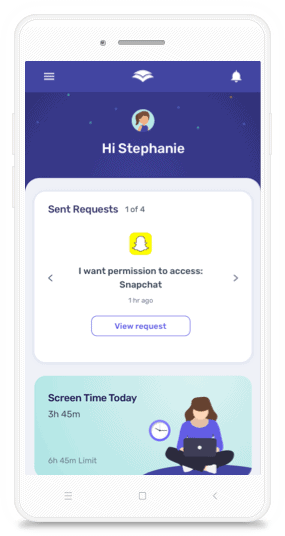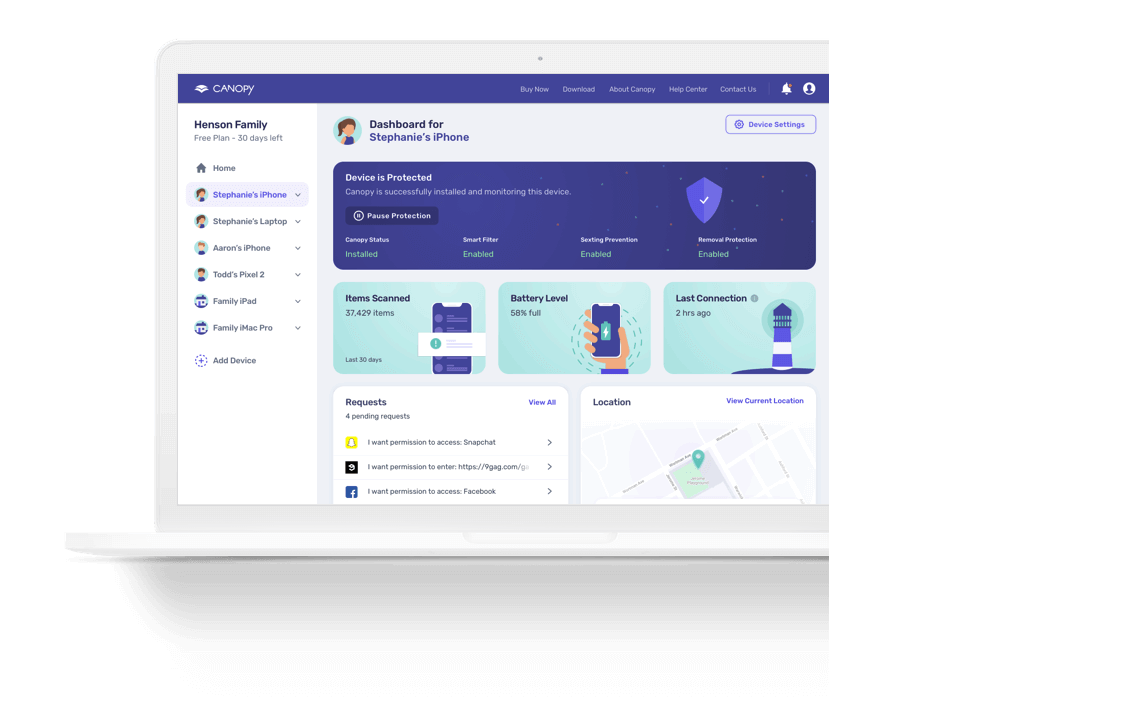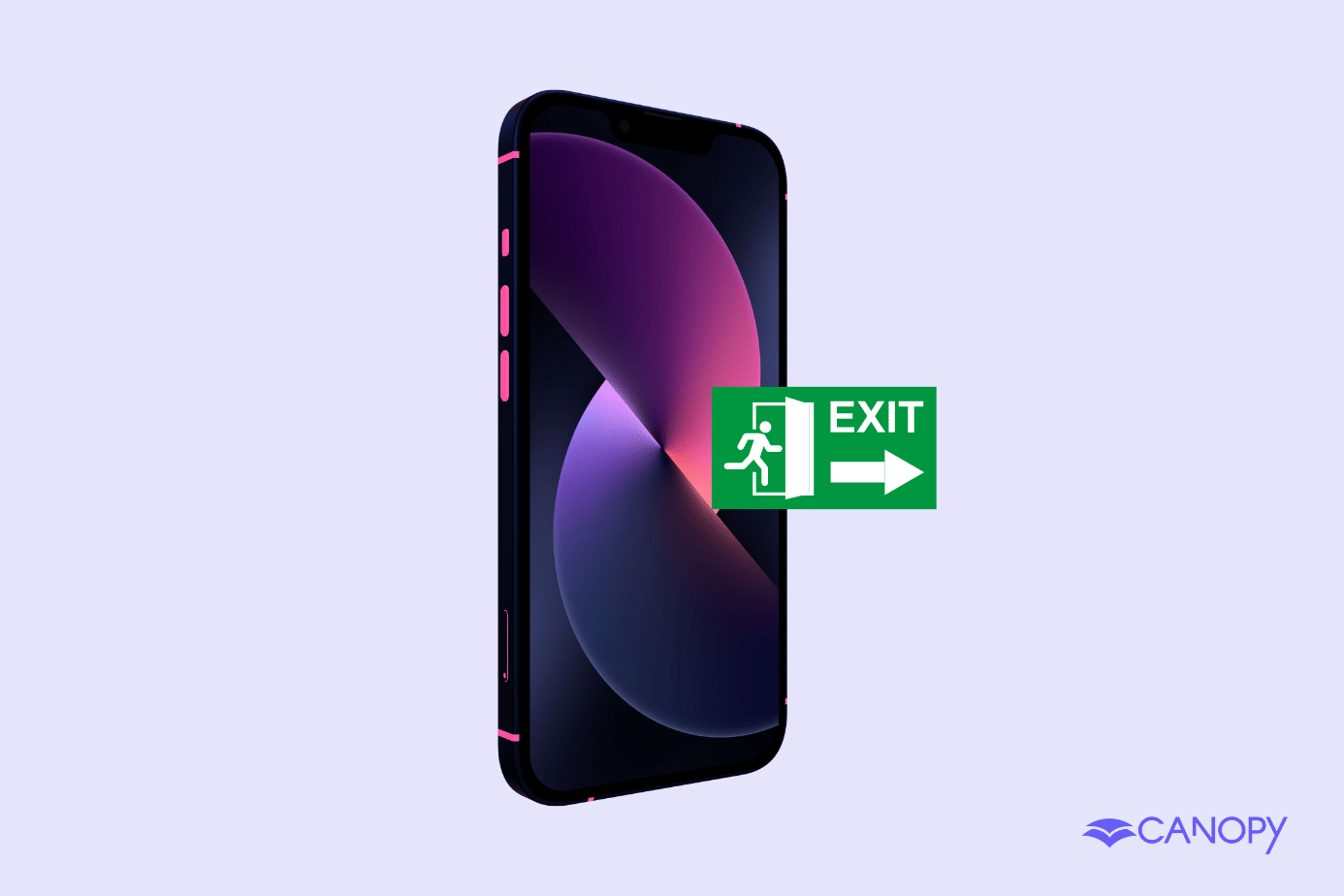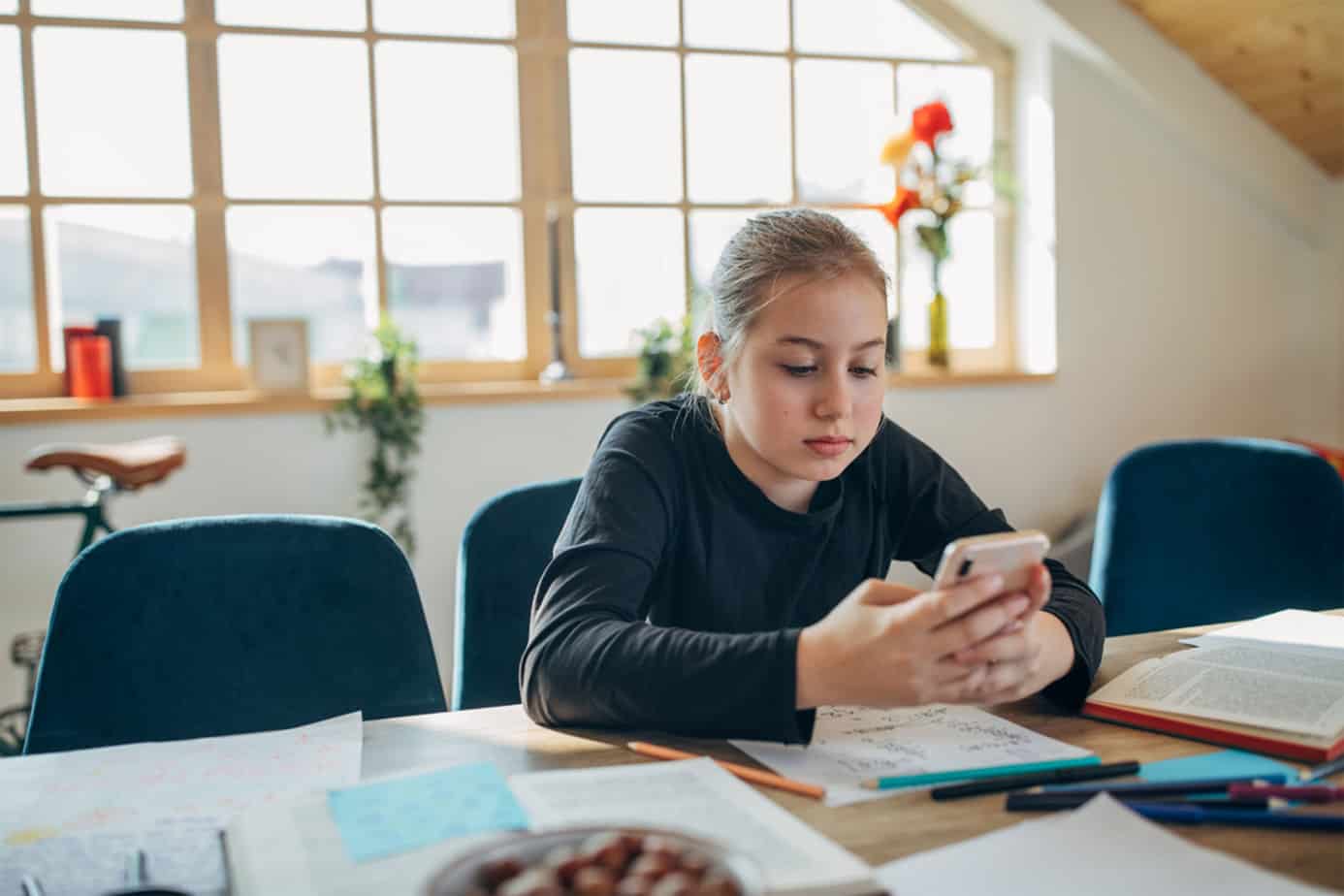What keeps you up at night?
Besides the restless tosses and turns of your toddler, it’s probably the looming question: “Is my toddler getting too much screen time?”
We all know that too much screen time is bad for toddlers (in fact, for kids of all ages).
Studies are clear that excessive screen usage leads to problems in social and emotional development, including sleep disturbances, depression, and anxiety.
Researchers have also found that screens may promote aggressive behavior and hinder social and emotional competence.
But reducing screen time for toddlers can feel like an uphill battle, especially if you don’t know where to start.
This is why we put together this article.
Here, we’ll dive deep into how much screen time is too much for your toddler, and give you 8 tips on how to reduce it using scientific studies.
We’ll also give you an implementation plan for most of them so you’re not left stranded with just tips.
Let’s go on this journey together.
Related Read: The 8 Best Apps to Reduce Screen Time
How Much Screen Time is Too Much for Your Toddler?
Managing a toddler’s screen time is challenging. Toddlers seem to be different people every day — and that’s not far off. Each developmental milestone requires a different approach to screen time.
No matter the age, though, a parent’s role is still the same.
An academic article published in Cureus concluded, “Parents play a crucial role in managing and reducing screen time by raising awareness, setting boundaries, and providing behavioral controls.”
To help create one, we turned to the American Academy of Child and Adolescent Psychiatry (AACAP) guidelines:
Under 18 months
Until 18 months of age, limit screen use to video chatting. The best example is FaceTiming a parent or grandparent out of town. Keep it short. The toddler should simply observe as you hold and handle the device.
18 months and 2 years old
When your toddler is between 18 months and 2 years old, limit screen time to watching educational programming. A caregiver should be present during screen time.
2 and 5 years old
For children between 2 and 5 years old, limit non-educational screen time to 1 hour per weekday and 3 hours on the weekend. These are the formative years of setting screen time boundaries. Adhere to these rules, and you’ll be in good shape for the future.
6 and up
For ages 6 and older, encourage healthy habits and limit activities that include screens. Suggestions from the AACAP include:
- Turn off all screens during family meals and outings.
- Learn about and use parental controls like Canopy.
- Avoid using screens as pacifiers, babysitters, or to stop tantrums.
- Turn off screens and remove them from bedrooms 30 to 60 minutes before bedtime.
How To Reduce Screen Time for Toddlers: 8 Effective Tips for Parents
Below, we give you 8 tips to draw up an effective, actionable screen time management plan, and to boost your toddler’s digital wellbeing.
Here’s a gist of the tips—please feel free to jump to the one you want to read first:
- Create a family media plan [FREE online tool]
- Use a parental control app—and how to get started
- Schedule internet-free times
- Lead by example (by reducing your own screen time)
- Replace screen time with Block Play
- Encourage Interactive Storytelling Sessions
- Engage in fun outdoor activities
- Remove screens from the bedroom
Tip #1: Create a Family Media Plan
Screens are everywhere around us, and it’s so easy to just flick on the TV or turn on the iPad for your kids at any given time of the day.
Creating a systematic Family Media Plan can help you effectively manage and reduce screen time.
It gives you guidelines you should stick to, and at the end of the week or the month, you can see whether it went according to plan (or not).
The American Academy of Pediatrics offers a free online tool to help create your Family Media Plan. This resource allows you to:
- Choose from a list of media priorities (e.g. TV vs. iPad)
- Get practical tips to help make the plan work
- Print or share your finished plan
- Save your plan and return as often as you’d like to make changes
Here’s a helpful video on how it works:
Once you have defined your goals and plan, you’ll feel more confident and ready to take on the challenge!
Tip #2: Use a Parental Control App to Reduce Screen Time for the Whole Family
A parental control app is an easy and effective way to kick off your journey to reducing screen time.
Instead of setting kitchen timers and manually monitoring screen time, you can let the device do the work. It can also help you stick to your Family Media Plan.
There are lots of really effective parental control apps available in the market, but if you have multiple devices or kids in different age groups (e.g. a toddler and a teenager), Canopy would be a perfect fit.
Canopy is a parental control and digital wellness app for kids, teenagers, and adults. It allows you to:
- Track screen time
- Set screen time limits
- Schedule internet downtimes times
- Filter out triggering or inappropriate content
- Block adult content on websites and porn sites
- Block specific websites and apps
Canopy works across all devices in your family:
- Android devices (smartphones and tablets) running Android 5.0 or higher
- iPhones and iPads running iOS 12 or higher
- Apple computers running a recent version of MacOS
- Any computer running a recent version of Windows OS
- Chromebooks running Chrome OS.
Apart from limiting screen time, Canopy is great at filtering out inappropriate and harmful content on the internet using AI. This is super helpful if you have a teenager and you’re concerned about their online safety.
While other apps completely block out websites, Canopy scans, detects, and blocks harmful content in real-time — before they even reach your kids’ device.
What’s more, Canopy is removal-proof, so your kids can’t remove it without your permission.
Here’s a comprehensive review from an actual parent who had used Canopy:
If you’d like to try out Canopy to limit screen time and harmful content, here are the steps to take:
- Create an account (7 days free!)
- Install Canopy Shield app (for parents) on the devices you wish to protect.
- Install Canopy app (for kids) – which allows you to monitor the protected devices, receive notifications, and remotely customize settings.
Tip #3: Schedule Internet-Free Times
The internet is a double-edged sword: it’s great for educational purposes, but it’s also the main culprit of a high screen time for kids.
Kids are constantly connected to the internet, and this can be the cause of addicted behavior or unwanted distractions as they grow older.
To combat this, establish certain times of the day, like during meals or before bedtime, as internet-free. This instills a habit in your kids that certain times are off-limits for screen use.
You can easily set customized internet down times on a daily or weekly basis on Canopy.
On a Down Time, your protected device will not be able to use the internet (but you can still use it for calls or texts).
Tip #4: Lead by Example—Reduce Your Own Screen Time
Toddlers are like sponges—they soak up everything they see and hear, using this information as the foundation for their own behaviors.
When it comes to screen time, research shows that:
“Children of parents who had a positive attitude towards their child’s screen use or were at high risk of smartphone addiction had significantly higher screen use and more frequent problematic screen use.”
In short, children who see their parents looking at screens all the time, tend to do the same.
By reducing your own screen time, you’re not only fostering a stronger bond with your toddler but also modeling how to manage and prioritize screen time.
This means making conscious choices about when and where to use digital devices. To help, we put together this five-step plan:
- Assess: Start by assessing how much time you’re spending on screens. You can use a screen time tracker which tells you how much time you spend on each device.
- Reform: Most of us pick up our phones on impulse. To avoid doing this frequently around your toddler, you can set up “mental speed bumps” like tying a rubber band around your phone or locking it up in a phone lock box.
- Limit: Set screen time limits and internet downtimes on your own devices using Canopy.
- Be Present: Put down your phone or device whenever you’re talking to your toddler or whenever they ask you a question. It can be difficult to put whatever you’re doing on pause, but having a face-to-face conversation with your toddler can do wonders for their development.
- Communicate: Talk about why you’re putting the phone down—”I want to spend quality time with you”—so your child understands the value of personal interaction over digital engagement.
We also wrote a more comprehensive guide on how to reduce screen time for adults here.
Tip #5: Replace Screen Time with Block Play
Swapping screen time for Block Play is not just a diversion; it’s a developmental boost for your toddler.
Engaging with blocks—whether they’re wooden, plastic, or magnetic—offers a hands-on learning experience that enhances spatial reasoning, problem-solving skills, and creativity.
Here’s what research has to say about it:
- A study published by the University of Edinburgh says block play and pretend play boost language, problem-solving abilities, social skills, and emotional regulation.
- The same University of Edinburgh study says children who engage in block play later demonstrate superior academic achievement.
- Interestingly, a Japanese study found block play enhances young children’s spatial ability more effectively than physical play.
- This study shows block games can effectively improve symptoms of children with ADHD.
Companies like Melissa & Doug offer age ranges for toys, so you can start with simple wooden blocks and build up to Legos, which really pass the time!
Here’s how to implement Block Play:
- Dedicate a Space: Create a specific area in your home where blocks are always accessible for play. This could be a corner of the living room or their bedroom.
- Join In: Make block play a shared activity. Sit down with your child and challenge each other to build different structures, which can be both fun and a learning experience.
- Vary the Blocks: Use different types of blocks to keep the activity exciting and introduce new challenges; for example, different textures, sizes, or interlocking blocks.
- Set Challenges: Encourage your child with small challenges, like building the tallest tower they can, or recreating shapes and objects from around the house.
Tip #6: Encourage Interactive Storytelling Sessions
Interactive storytelling, where you and your toddler take turns telling parts of a story, can be a powerful alternative to screen time.
Research supports the idea that engaging in storytelling can enhance a child’s language skills, imagination, and emotional development.
This type of activity stimulates brain areas involved in understanding narratives and emotions, which are less active when watching stories unfold on a screen.
For instance, this study shows that Combined Movement and Storytelling Intervention (CMSI) may significantly improve
- Fundamental motor skills
- Language development
- Physical activity levels
…in children aged 3 to 6 years.
We also found a super interesting study that showed:
“Pretend play of female role models increases young girls’ persistence in science, potentially reducing gender gaps and empowering girls in scientific domains.”
Here are some tips to make Interactive Storytelling a regular part of your toddler’s daily routine!
- Set aside a regular “story time” each day or week where screens are off, and storytelling is the main event.
- Use story prompts to kickstart the imagination, such as a mystery box filled with random objects to include in the story.
- Encourage your child to draw scenes from the story as you both narrate, enhancing their visual and spatial skills.
- Rotate storytelling roles, sometimes letting your child lead the way, which fosters independence and confidence in their own ideas.
This method not only reduces screen time but also enriches your child’s cognitive and emotional development through creative and engaging interactions.
Tip #7: Engage in Fun Outdoor Activities
Spending time outside provides a break from technology, reducing screen time and allowing us to disconnect from the virtual world.
This 2022 study shows that outdoor play positively impacts children’s social, emotional, physical, and cognitive development, even counteracting the negative effects of sedentary indoor activities (like looking at a screen).
Here are some more fun and engaging outdoor activities you can do with your kids:
- Nature Bracelets (our favorite!): Wrap a piece of sticky tape around your toddler’s wrist, sticky side out. As you walk, they can stick small leaves, flowers, and feathers to their bracelet.
- Nature Walks: Explore local parks or trails, and encourage your toddler to collect leaves, rocks, or flowers. You can talk about the colors, shapes, and textures you find.
- Water Play: Set up a small kiddie pool, sprinklers, or a water table in your yard. Toddlers love splashing and playing with water toys, which is perfect for warmer days.
- Picnic Outings: Pack a picnic with your toddler’s favorite snacks and have a picnic in your backyard or a nearby park. Bring along some books or simple toys for added fun.
- Sidewalk Chalk: Get some colorful sidewalk chalk and draw on your driveway or a safe sidewalk. Encourage your toddler to create their own art.
- Bubble Blowing: Blowing bubbles is a simple and mesmerizing activity. You can either buy bubble solution or make your own at home.
- Gardening: Involve your toddler in gardening by letting them help with watering plants or digging in a small area. You can also give them their own little pot to plant seeds.
- Animal Watching: Visit a local farm, zoo, or even observe birds and squirrels in your backyard. Talk about the different animals and the sounds they make.
- Obstacle Courses: Create a simple obstacle course using items like cones, boxes, and ropes. This helps in developing motor skills and is a lot of fun.
- Story Time Under the Sky: Bring a blanket and some books and read stories under a tree or just under the open sky.
Tip #8: Remove screens from the bedroom
Research has proven that screens in children’s bedrooms harm their emotional and physical well-being.
For instance, one study found that having a TV in children’s bedrooms at age 6 forecasted lower levels of emotional understanding at age 8.
Another found that having TV/technology in the bedroom negatively impacts sleep for preschool children.
It’s safe to say that bedrooms should be strictly a screen-free zone.
Remove all digital devices from your kid’s bedroom. This includes TVs, tablets, smartphones, and even portable gaming devices. Explain to your child that the bedroom is a place for sleeping and resting, not for screen time.
You can also replace screen time with other relaxing activities before bed, such as reading books, listening to gentle music, or doing some light stretching or yoga.
These activities can help your child wind down and prepare for sleep without the stimulation from screens.
Reducing Screen Time for 2 Year Old’s is Possible
Research by Henry J. Kaiser Foundation showed that children’s media use decreased by almost three hours daily when parents set media rules.
Your toddler’s total screen time might be more significant than you realized. Start monitoring it, and implement steps one by one.
As a starting point, consider using Canopy. This app is the easiest and most helpful tool for reducing screen time.
With Canopy, you can set screen limits for each app. The app alerts you when the user is about to reach their limit.
You can also create rules around device downtime, like during dinner or bedtime. And for curious kids, AI-powered tools block inappropriate content before they even see it.
Start your free trial here.
FAQs on how to reduce screen time for toddlers
What are the symptoms of too much screen time?
The Mayo Clinic reports that too much screen time can be linked to:
- Irregular sleep
- Behavioral problems
- Impaired academic performance
- Violence
- Weight issues
- Less time for play
We can reduce these negative effects by acknowledging the problem and encouraging alternative activities.
How do I stop my toddler from using too much screen time?
The first step is to automate where you can. This is where a helpful parental control app like Canopy comes in. The app for mobile and desktop computers allows you to set screen time limits.
Should I completely stop my toddler from looking at the screen?
A study published in 2023 found that screen use can have both beneficial and detrimental effects on a kid’s cognitive results.
Research suggests that e-books and learning-to-read apps may improve young children’s early reading skills and creative thinking capacities. However, studies have also demonstrated the negative effects of screen media use on several cognitive areas.
It’s ultimately up to the parent to decide the right amount of screen time for their child and what alternative activities help reduce screen time.





